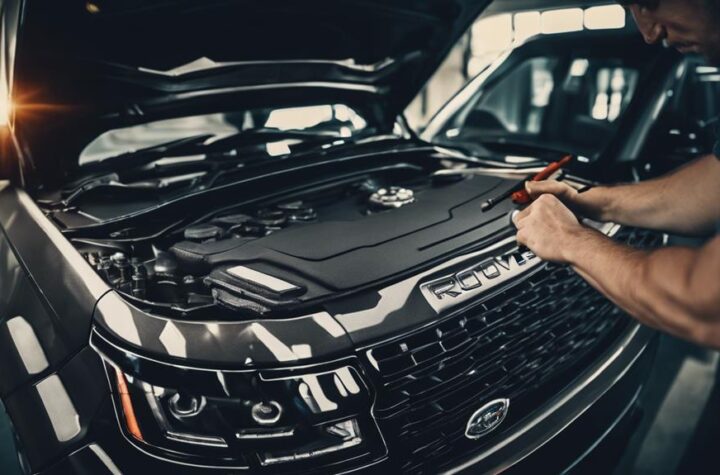Pity the poor pushrod, the Rodney Dangerfield of engine components. The pushrod is a simple metal messenger. It transmits dynamic messages upward from a carefully designed camshaft buried in the block to a pivoted rocker atop the engine’s cylinder head. The rocker transmits those messages downward to a spring-loaded valve that precisely opens, then closes, to let fuel/air mixture into the combustion chamber or vent exhaust gases out. It does this effectively, reliably and inexpensively, usually for the life of the engine.
The pushrod is a simple metal messenger. It transmits dynamic messages upward from a carefully designed camshaft buried in the block to a pivoted rocker atop the engine’s cylinder head. The rocker transmits those messages downward to a spring-loaded valve that precisely opens, then closes, to let fuel/air mixture into the combustion chamber or vent exhaust gases out. It does this effectively, reliably and inexpensively, usually for the life of the engine.
This simple, cheap, anvil-solid overhead valve (OHV) arrangement has served America’s motorists well for many decades and continues to serve where its advantages outweigh those of overhead cam (OHC) designs. One camshaft between the banks of V-type engines drives both intakes and exhausts. Losing the pushrods gains some mechanical efficiency but adds at least a second camshaft and moves them up onto the heads, which adds cost, complexity and engine size.
Larger engines are tough to package under low, sleek, aerodynamic hoods, so OHCs tend toward smaller in overall size, and therefore displacement, which reduces power and torque. They can regain power, and efficiency, by adding valves (three or four per cylinder) and camshafts: one per bank for intakes, another for exhausts. More cost and complexity. While this evolution to OHCs was happening, driven by high gas taxes and punative penalties on larger displacements, in Europe and Japan, the majority of American engines continued with OHVs because there was no need or demand to change them. Then fuel efficiency became an issue with the 1973 fuel crisis, and imported cars from Europe and Japan began gaining market share.
Importing mostly the best of what they sold at home, these makers positioned their smaller, less powerful yet more expensive OHCs as more sophisticated and more desirable than American OHVs. And, in most ways, they were, since the typical iron-block American OHV of the ’70s and ’80s had evolved little since the ’50s. Compared to most import engines of the time, they were noisy, shaky and thirsty.
Thence came the conventional wisdom that “high-tech” OHC engines are smooth, refined and efficient while “low-tech” OHV engines are rough, crude and inefficient. The pitiful pushrod took the blame for the sins of entire old-design engines. But what most media and auto aficionados seem unable to grasp today is that there is a lot more to an engine’s refinement and sophistication than its valvetrain configuration.
General Motors continues to install OHV V- 6s and V-8s in nearly two-thirds of its North American vehicles, and continues to refine them. These torquey, reliable and relatively inexpensive “high-value” engines satisfy and delight owners who don’t care what kind of machinery is under their hoods, only how well it works. If it starts instantly and runs reliably every time, provides the performance they need with reasonable fuel efficiency, requires little or no maintenance and lasts as long as the vehicle, fine!
But GM also offers world-class OHC multivalve mills in premium and performance products where the engine’s image matters for the 20 to 30 percent who would not be satisfied with “yestertech” pushrod engines however powerful, refined and efficient. Ford and DCX have evolved most of their engines to OHC, but Ford retains lower-cost OHV V-6s as standard in several products, while Chrysler very effectively uses OHVs in its muscular reborn Hemi V-8.
OHV engines are easier to assemble and service and easier to modify (by temporarily disabling pushrods) for fuel-saving cylinder deactivation — GM’s Displacement on Demand (DOD) and Chrysler’s Multi-Displacement System (MDS). For a given displacement, they’re typically lighter and smaller in size. And, because they can pack more displacement into a given package size, they give better torque for low-end acceleration. OHCs offer higher-rpm capability and more easily accommodate performance- and efficiency-enhancing multiple valves and variable valve timing, although GM is developing both for OHVs.
GM’s strategy also says that 1 percent of its engines will be “image” types for image products such as Chevy’s Corvette Z06, which is powered by a highly sophisticated 5.7L 400-hp (rumored soon to be 6.0L 500-hp) pushrod V-8. That marvelous engine is far less expensive than others of comparable performance, and few fortunate to own one have any complaints.
Gary Witzenburg, a former advanced technology engineering manager and part-time racing driver, is a widely published auto writer and Editor at Large of Automotive Industries.
- May 2004
- Gary Witzenburg














































 Increase Displacement to Save Fuel?
Increase Displacement to Save Fuel? Cars Worth Noting: 2004 BMW 645 Ci
Cars Worth Noting: 2004 BMW 645 Ci


